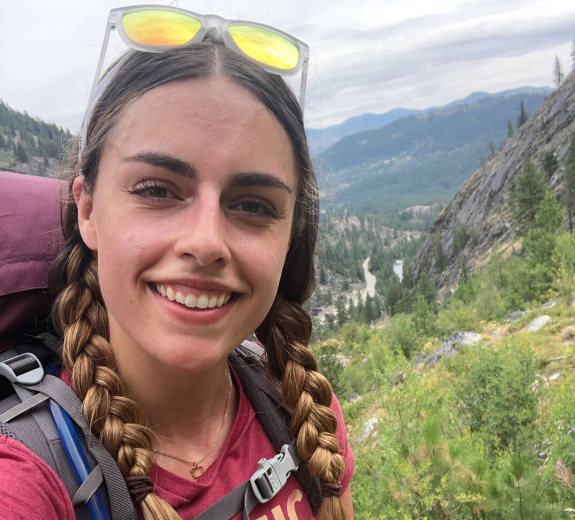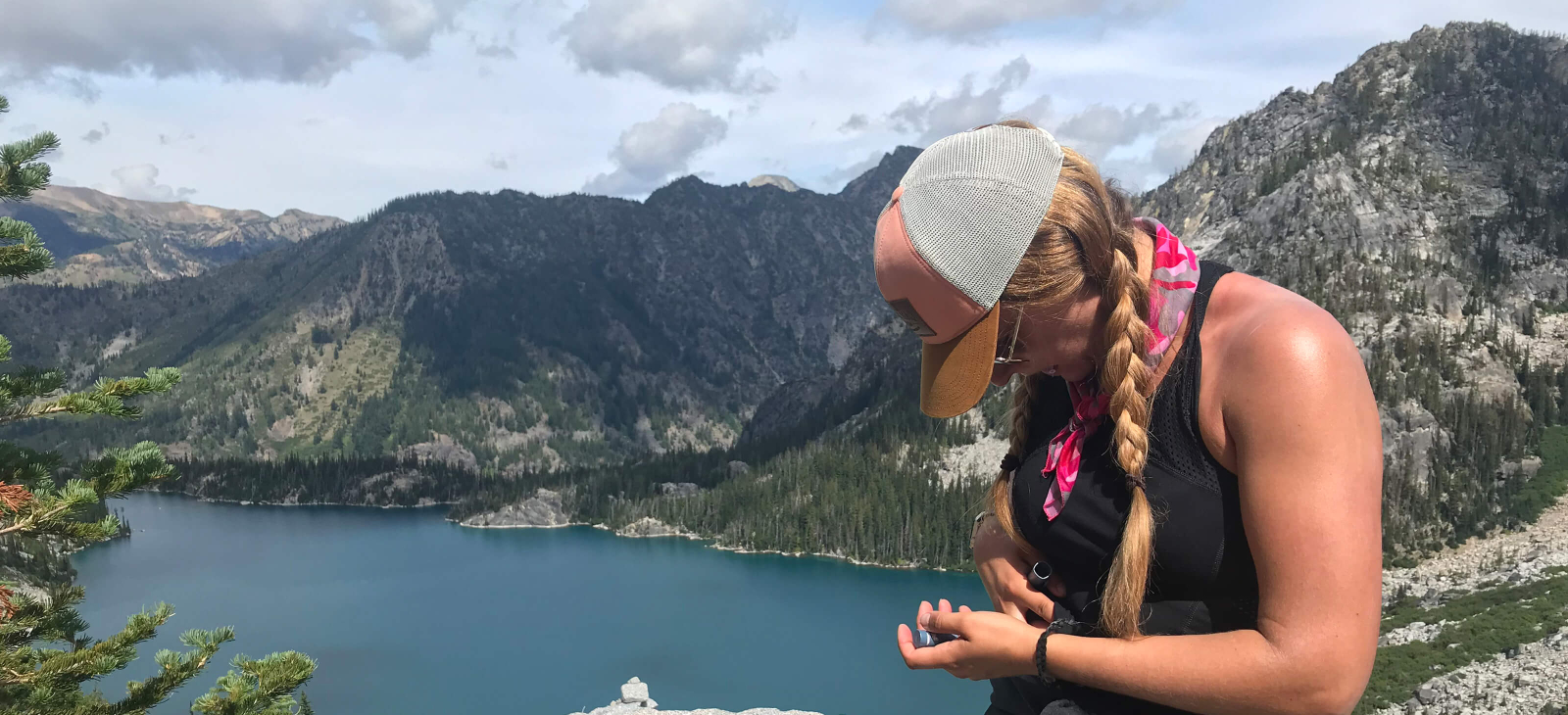
Hiking and Backpacking with Type 1 Diabetes: Tips and Stories from A Washington Hiker
After six miles and several hours of hiking in the heat of the day, Andrea Williams reached her destination: A view of Mount Rainier so close and clear that she couldn’t even fit the whole mountain in a photo. Then she checked her blood sugar.
“I hit this unicorn blood sugar, a perfect 100 — there’s no good or bad blood sugar but that one just felt a little magical,” she says. “It was this magical blood sugar in this magical setting, I just remember staring up at the mountain and feeling so small.”
Andrea has been living with type 1 diabetes (T1D) since 2009. She was never much of a hiker until she moved to Seattle in 2012, and wanted to explore all of the nature that surrounds the city. T1D adds layers of preparation for her adventures. But from using alpine lake water to keep her insulin cool to knowing exactly what snacks to pack, she’s found countless ways to manage T1D while exploring the outdoors.
“Diabetes doesn’t know the hours of the day, it just does what it does, it's a 24/7 disease,” Andrea says. “But hiking is one of the best times that I can step away from it just a little bit. Being outdoors helps me get some peace of mind and re-center, especially now that I’ve done enough hikes and know my body’s patterns and how to prepare.”
Training for Outdoor Adventures With T1D
T1D happens when immune cells mistakenly start attacking your pancreas, an essential organ that regulates blood sugar. This causes the pancreas to stop working properly — which means blood sugar can get dangerously high or low and lead to serious health consequences. Living with T1D means a constant balancing act of managing your blood sugar, using all kinds of tools to factor in food and exercise to maintain that balance.
When Andrea took up hiking and backpacking, she had to figure out how to manage all of these things in the wilderness.
“At first, I was really nervous,” she says. “Exercising in general can be tricky with type one. It's one thing to be at the gym and you can run across the street to 7-Eleven if you need something or you have people nearby who could help in case of an emergency. Now you're adding wilderness, where you might not have phone signal or could run out of supplies. And that can be scary.”
She started by doing research and learning from other hikers with T1D through Instagram. Her approach was to start small, doing short hikes and keeping a log of her blood sugars throughout each one.
“I started with three miles, then four, five, six,” she says. “Now, I’ve done as much as about 26 miles in one day. But I don’t really suggest that, it's very hard on your knees!”
There’s also the mental preparation that comes with these long hikes — and the balance between being aware of blood sugar but not letting it be your only focus.
“My watch will buzz at me every mile to check my blood sugar, but I try to use being in the mountains to remember how my body feels with diabetes — how I feel when I’m high or low and really listen to my body,” she says. “It's the mental game that people with T1D balance: How do I stay aware of this but not focus on it all the time?”

Tips for Hiking and Backpacking With T1D
Being in shape for hiking and backpacking is just one part of the equation. While packing just the right amount of food and supplies can be difficult for any outdoors person, T1D adds a lot more preparation.
“I start by looking at the distance and elevation gain to figure out how strenuous the hike will be and what the conditions will be like,” she says. “I’ll often look at trail reports to see if it's a gradual incline or a big steep climb because all of that goes into how I factor my insulin.”
Cold storage for insulin is also a key, especially for backpacking trips.
“I’ve been able to keep it cool enough because I’ve been near Alpine lakes,” she says. “I filter drinking water from those lakes and store my insulin right next to my hydration pack and that usually keeps them at a good temperature. Or I'll travel with a little insulated FRIO pack.”
Andrea shared a few more tips and best practices for hiking and backpacking with T1D:
- Bring three times as much glucose as you think you’ll need.
- Bring a backup way to administer insulin.
- Pack snacks that can help keep your blood sugar level. Andrea often has oatmeal for breakfast, and snacks on dried fruit and tortillas with peanut butter.
- Bring a variety of snacks high in glucose — fruit snacks, fruit roll-ups, glucose gels — so you have some variety if you need to get your blood sugar up. Andrea recommends Pixy Stix for a lightweight snack that can boost your blood sugar for long hikes and backpacking trips.
- Make sure someone in your group knows what to do in case of emergency. Andrea always packs two glucagons and keeps one in her pack and gives the other to someone else in her group.
- Openly communicate with others in your group when you need to take a pause because your blood sugar is low. Andrea communicates this by saying what she’s feeling — such as “I feel dizzy right now,” or “I feel kind of sick right now, can we take a break.”
- Backpack only in groups and hike alone only if you have cell phone service in the area. When hiking alone, Andrea tells someone when she’s at the trailhead and when she expects to be back. She’ll also enable a GPS tracker on her phone or share her location with another person.
Building a T1D Community
For Andrea, outdoor activities have also been a way to connect with others who live with T1D. She regularly hikes with a group of women living with T1D. She also works as a program manager for the Juvenile Diabetes Research Foundation (JDRF), helping rally support for T1D research. Part of her impetus for joining these groups and doing her work is to help build a supportive community for those who live with T1D.
“It's such a great feeling to have that community that instantly gets you, that speaks your language — that you can call and say ‘meet me at the trailhead because I need insulin’ and they’ll come running,” Andrea says. “I remember hiking Mailbox Peak, this trail with a cool mailbox at the top. I opened the mailbox and there was a glucose gel inside. It was so heartwarming that there was another type one around. It's moments like that when you know you’re not alone.”
Immuno-what? Hear the latest from BRI
Keep up to date on our latest research, new clinical trials and exciting publications.


